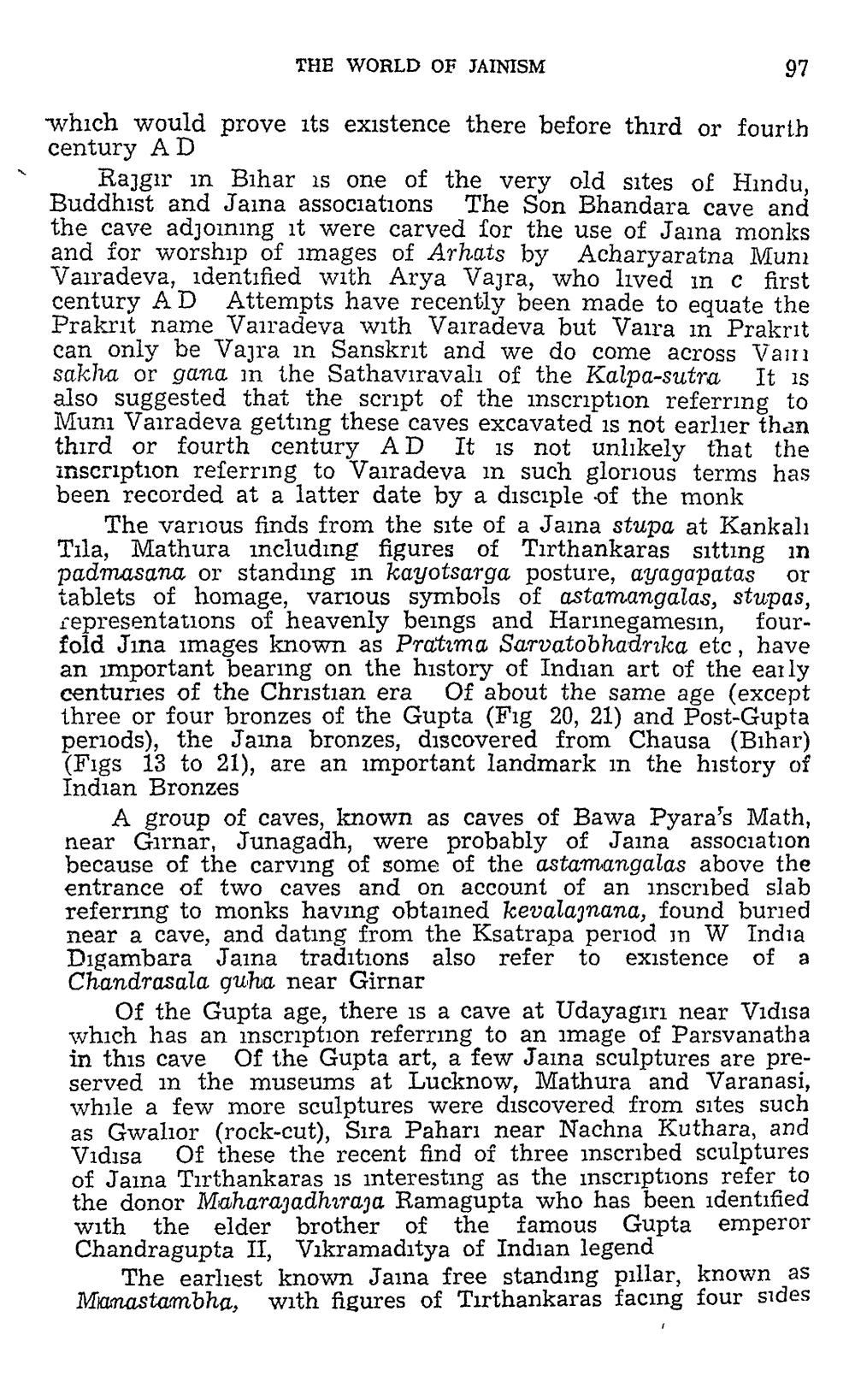________________
THE WORLD OF JAINISM
which would prove its existence there before third or fourth century AD
Rajgir in Bihar is one of the very old sites of Hindu, Buddhist and Jaina associations The Son Bhandara cave and the cave adjoining it were carved for the use of Jaina monks and for worship of images of Arhats by Acharyaratna Muni Vairadeva, identified with Arya Vajra, who lived in c first century AD Attempts have recently been made to equate the Prakrit name Vairadeva with Vairadeva but Vaira in Prakrit can only be Vajra in Sanskrit and we do come across Vam
na in the Sathaviravali of the Kalpa-sutra It is also suggested that the script of the inscription referring to Munı Vairadeva getting these caves excavated is not earlier than third or fourth century AD It is not unlikely that the inscription referring to Vairadeya in such glorious terms has been recorded at a latter date by a disciple of the monk
The various finds from the site of a Jaina stupa at Kankalı Tıla, Mathura including figures of Tirthankaras sitting in padmasana or standing in kayotsarga posture, ayagapatas or tablets of homage, various symbols of astamangalas, stupas, representations of heavenly beings and Harinegamesin, fourfold Jina images known as Pratima Sarvatobhadrika etc, have an important bearing on the history of Indian art of the early centuries of the Christian era of about the same age (except three or four bronzes of the Gupta (Fig 20, 21) and Post-Gupta periods), the Jaina bronzes, discovered from Chausa (Bihar) (Figs 13 to 21), are an important landmark in the history of Indian Bronzes
A group of caves, known as caves of Bawa Pyara's Math, near Girnar, Junagadh, were probably of Jaina association because of the carving of some of the astamangalas above the entrance of two caves and on account of an inscribed slab referring to monks having obtained kevalagnana, found buried near a cave, and dating from the Ksatrapa period in W India Digambara Jaina traditions also refer to existence of a Chandrasala guha near Girnar
Of the Gupta age, there is a cave at Udayagırı near Vidisa which has an inscription referring to an image of Parsvanatha in this cave Of the Gupta art, a few Jaina sculptures are preserved in the museums at Lucknow, Mathura and Varanasi, while a few more sculptures were discovered from sites such as Gwalior (rock-cut), Sıra Paharı near Nachna Kuthara, and Vıdısa Of these the recent find of three inscribed sculptures of Jaina Tirthankaras is interesting as the inscriptions refer to the donor Maharajadhiraja Ramagupta who has been identified with the elder brother of the famous Gupta emperor Chandragupta II, Vikramaditya of Indian legend
The earliest known Jaina free standing pillar, known as Manastambha, with figures of Tirthankaras facing four sides




